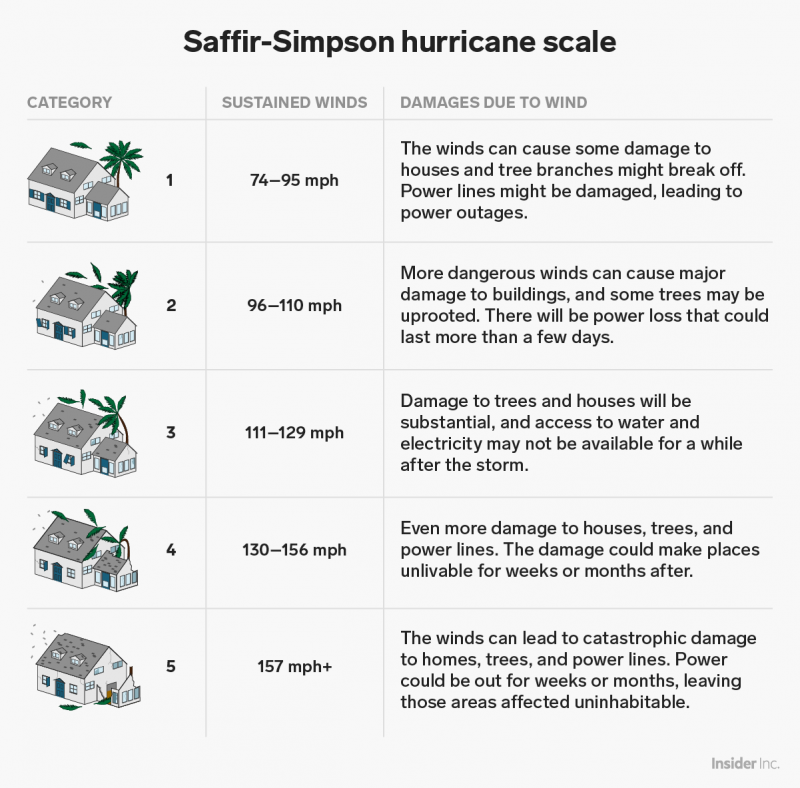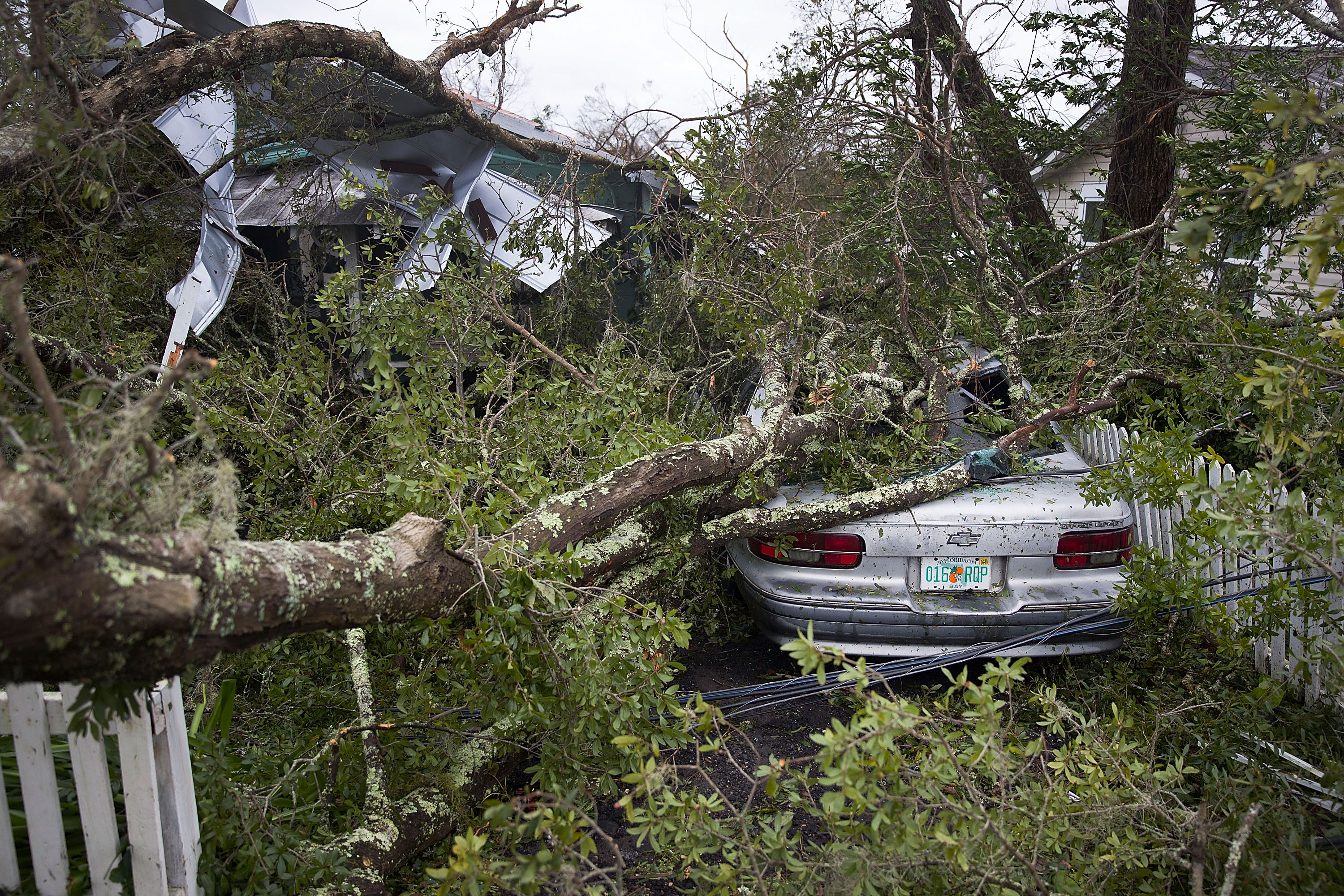- Hurricane Michael weakened to a tropical storm early Thursday morning as it moved across central Georgia with maximum sustained winds of 50 mph.
- Hours earlier, it made landfall in Florida as the strongest hurricane to hit the US in nearly 50 years and the third-strongest ever.
-
The storm is expected to move into South Carolina on Thursday morning. North Carolina and Virginia are also in its path.
- Officials have reported at least two storm-related fatalities. A man in Greensboro, Florida, was killed when a tree fell on his house, a representative for the Gadsden County sheriff said. An 11-year-old child was killed in Seminole County while the storm moved through Georgia on Wednesday night, a local emergency services official said.
- Hundreds of thousands of people were without power as of 6 p.m. ET on Wednesday, according to the US Energy Information Administration.
Hurricane Michael weakened to a tropical storm early Thursday morning while churning across central Georgia with maximum sustained winds of about 50 mph. Less than a day earlier, it made landfall as a Category 4 hurricane near Mexico Beach, Florida.
Storm flooding leveled off along the Gulf Coast as of 2 a.m. ET, the National Hurricane Center said. Tropical-storm conditions were being felt in parts of central and southeastern Georgia.
Michael’s center is expected to move through eastern Georgia and on to central South Carolina, according to the latest advisory.
The storm is then due to move across parts of North Carolina and Virginia late Thursday night or early Friday morning.
As of 5 a.m. ET on Thursday, the storm was 30 miles west of Augusta, Georgia.
Officials have reported two storm-related fatalities. A man in Greensboro, Florida, was killed when a tree fell on top of his home, a representative for the Gadsden County sheriff said. An 11-year-old child was killed in Georgia's Seminole County while the storm moved through the state Wednesday night, WTOC reported, citing the Emergency Management Agency's director, Travis Brooks.
Hundreds of thousands of electricity customers were without power as of 6 p.m. ET on Wednesday night. The US Energy Information Administration said about 388,000 customers in Florida, 46,000 customers in Georgia, and 45,000 customers in Alabama were in the dark as the storm moved inland.

Gov. Kay Ivey of Alabama issued a state-wide state of emergency on Monday "in anticipation of wide-spread power outages, wind damage, and debris produced by high winds and heavy rain associated with Hurricane Michael."
Gov. Nathan Deal of Georgia issued an emergency declaration for 92 counties in the southern part of that state. "The emergency declaration is effective for seven days and makes all state resources available to local governments and entities within the impacted area of the hurricane," his office said.
In the Carolinas, communities are still working to recover from Hurricane Florence.

A National Weather Service map shows when winds are likely to arrive in various states:

Forecasters said storm-force winds were possible in areas of southeastern Virginia, northeastern North Carolina, and the Delmarva Peninsula when Michael moves off the mid-Atlantic coast late Thursday or early Friday.
The storm had picked up steam as it sped across the Gulf of Mexico toward the Florida Panhandle. When its eye hit Florida's Gulf Coast on Wednesday afternoon, the storm had sustained winds of 155 mph, according to the National Hurricane Center, putting it just shy of a Category 5 hurricane.
Michael's minimum central pressure - a key measure of hurricane strength - was measured at 919 millibars when it made landfall. That makes Michael the third-strongest hurricane to hit the US and the strongest in nearly 50 years.
Central pressure is the measure of how much the atmosphere in the middle of a storm weighs. Lower central pressure indicates a stronger storm. Michael's measurement indicates it's more intense than Hurricane Andrew, which hit Florida in 1992 with a pressure of 922 millibars, and Hurricane Katrina, which devastated New Orleans in 2005 when it hit with a pressure of 920 millibars.
Normal air pressure is about 1,010 millibars; when central pressure is significantly lower than that, things become more turbulent, with more air movement and wind kicking up.
Though wind speed is the basis for hurricane categories, central pressure is actually a better measure of damage that a hurricane will cause, a study published last year in the journal Nature Communications found.

Michael was a monster storm by wind speed around the time it made landfall. It had sustained winds of 155 mph, meaning it wasn't far from a Category 5 storm - a Category 4 hurricane has sustained winds of up to 156 mph, and Category 5 is 157 mph and above.
Just one storm has been recorded with higher sustained wind speeds this far north in the Gulf of Mexico: Hurricane Camille in 1969.
